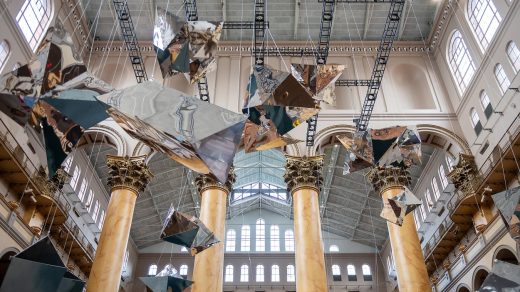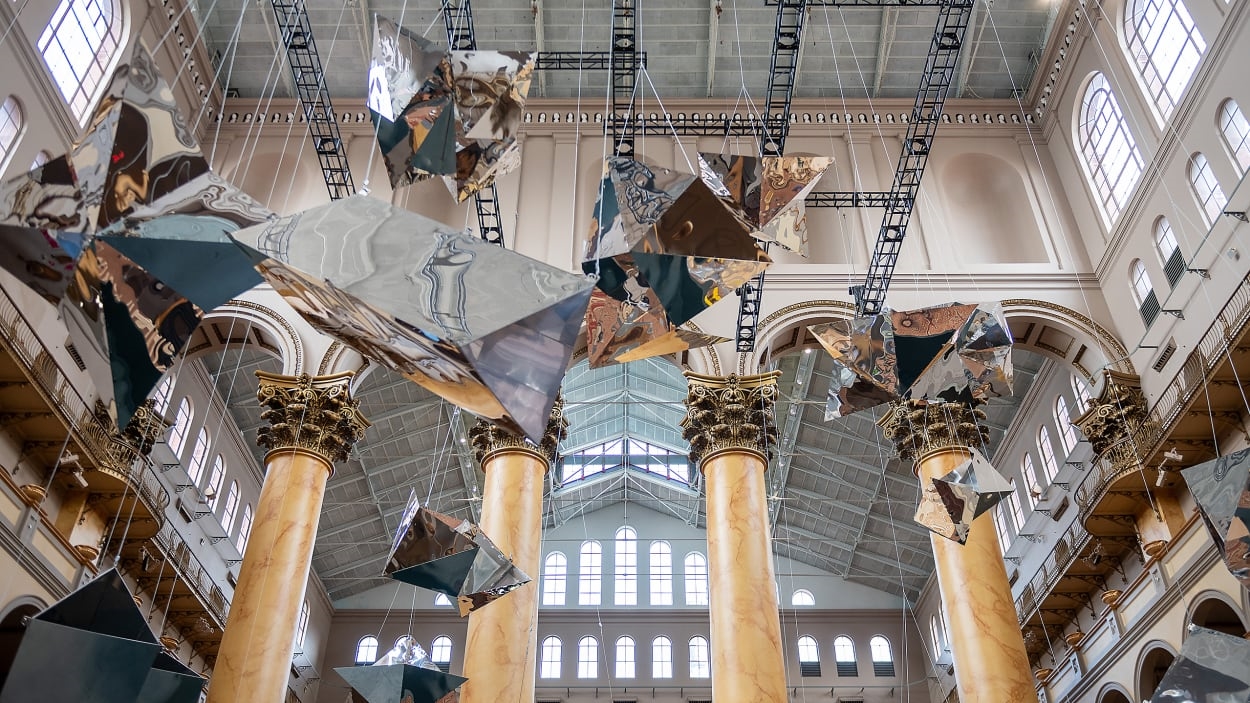How this 19th-century building became a giant, kaleidoscopic installation
Whether you remember them as fortune tellers or by their more colloquial name, “cootie catchers,” origami-style folded paper contraptions have been used by generations of schoolkids to get a glimpse of their potential futures. Like a pyramid crossed with a flower, these paper devices open up to reveal hidden details—perhaps even truths—about the person venturing to peer inside. Yes, you will one day be rich. No, you will not live on an island. Yes, Dylan S. does like you.
These visions are now on full display in a flashy new installation at the National Building Museum in Washington, D.C. Measuring more than 5 feet across, floating high above the ground, and coated in a mirror-like reflective surface, 20 schoolyard-style fortune tellers and mirrored kaleidoscopes make up Look Here by architect Suchi Reddy, founder of New York-based Reddymade Architecture and Design.
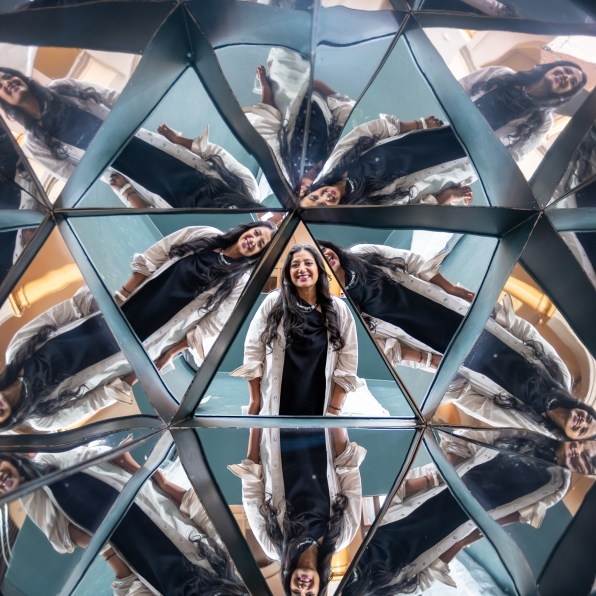
Seen from the ground of the museum and on an elliptical ramp Reddy has designed especially for the installation, the floating fortune tellers offer a myriad of reflections and visions. “It’s about the body in space. It’s about multiple angles, how we view our lives, and all these perspectives coming together,” says Reddy, who’s known for her firm’s modernist buildings and interiors. “I’m playing with creating a brand-new image every time you move your body.”
Look Here is the latest iteration of the National Building Museum’s Summer Block Party series, an artistic or architectural intervention in the soaring space of the museum’s Great Hall. Ringed by arched galleries and punctuated by eight massive Corinthian columns climbing 75 feet high, the hall is an epic room covering more than 35,000 square feet.
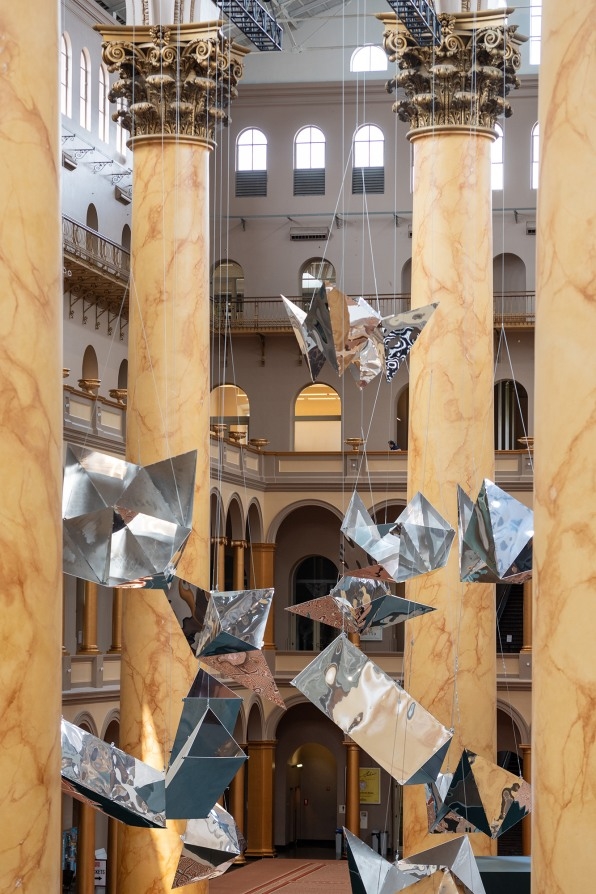
“As an architect, the first thought that you have is how do you address this kind of a space that is so gigantic that it makes anybody feel small—which is the point of it—but also make people feel comfortable and engaged,” Reddy says.
Built in the 1880s to house the Federal Pension Bureau, the enormous brick structure is topped with peaked roofs that spill light down into its cavernous central court. “Especially when you’re a modernist, you look at the beauty of this building and you think about how that can actually be reflected and understood through our eyes today,” Reddy says. “The idea of perspective came to mind immediately.”
Initially she had thought of filling the Great Hall’s towering void with reflective spheres, but then wondered whether there could be a shape that would provide even more surfaces to reflect. Thinking back to her own school days, she remembered the folded paper fortune teller. “It was like a eureka moment,” she says.
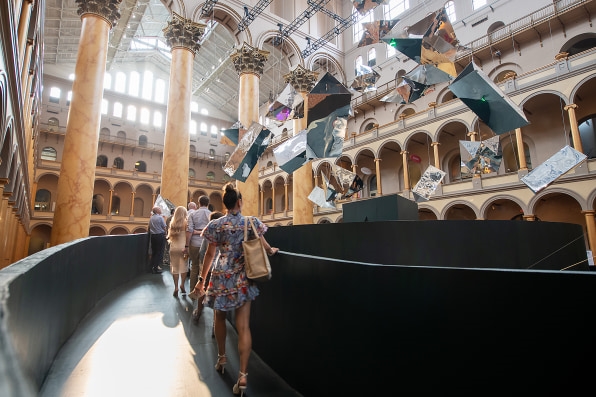
In Reddy’s design, the fortune tellers morphed from mirrored objects into a pointed opportunity to explore the different perspectives of people in the museum, and also in Washington, D.C., the heart of the nation’s democracy. Interspersed in the floating mirror surfaces, Reddy has placed images of activist marches that have taken place in the capital, subtly suggesting visitors see themselves in these collective actions. Several 8-foot-long mirrored kaleidoscopes offer even more fractal-like views of the museum and of the visitors viewing the installation, which is on display until September 4 (adult tickets are $10).
Reddy says the perspectives and views created by the installation are intended to be fleeting and irreplaceable, prompting visitors to think about how they see themselves in the world, and how they think about their own futures.
Of course, Reddy understands that many will want to capture these moments in photographs and videos. “You could take hundreds of pictures and they would not be the same, and that is, for me, a real metaphor for how we experience life,” she says. “No moment is the same, no piece of architecture is the same, no moment in a piece of architecture is the same. I want everybody to feel the richness of that.”
(16)

